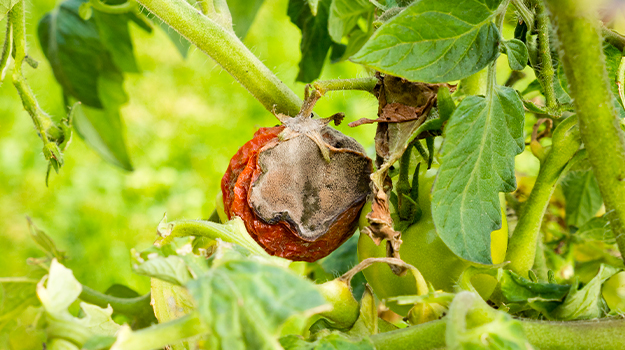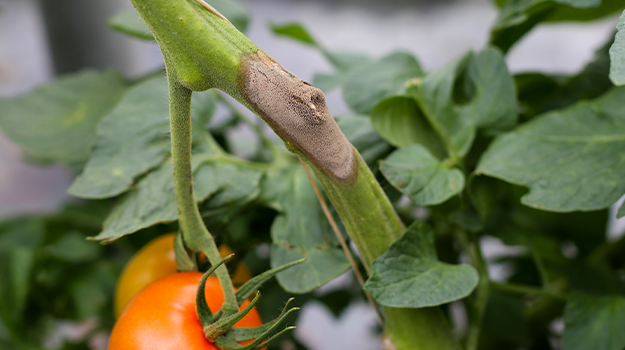Botrytis, or grey mold, is also a fungal disease caused by the growth of a fungus in cool, damp weather. Its appearance can also be encouraged by inadequate watering or insufficient air circulation between plants.
This fungus thrives in plants with dense foliage, when the temperature is around 18 to 20 °C. Not limited to tomatoes, the disease also affects small fruits, peas, beans and certain ornamental plants (dahlias, peonies, lilies, roses, chrysanthemums and various shrubs).
Botrytis: how to identify grey mold
The fungus is easily visible on flowers or fruits, which become partially covered with grey or brownish mold. It also causes flowers to wilt and brown spots to appear on the leaves, which eventually die. The disease can also cause roots to rot and stems to dry out.
When conditions are favourable for the fungus, its presence can compromise your harvest. Certain diseases or lesions that create openings in the fruits or plant provide excellent opportunities for the fungus to infiltrate.
How to protect your tomatoes from grey mold?
- Remove the affected parts. Removing them quickly prevents the spread of the fungus.
- Water as needed, not systematically, and avoid wetting the foliage.
- Spread mulch at the base of the plants to limit watering.
- Prune your plants to ensure good air circulation.
- Respect the recommended planting distances.
- If necessary, use a fungicide, carefully following the manufacturer's recommendations. (Limit their use as much as possible since fungicides can have harmful effects on the environment and beneficial insects.)


